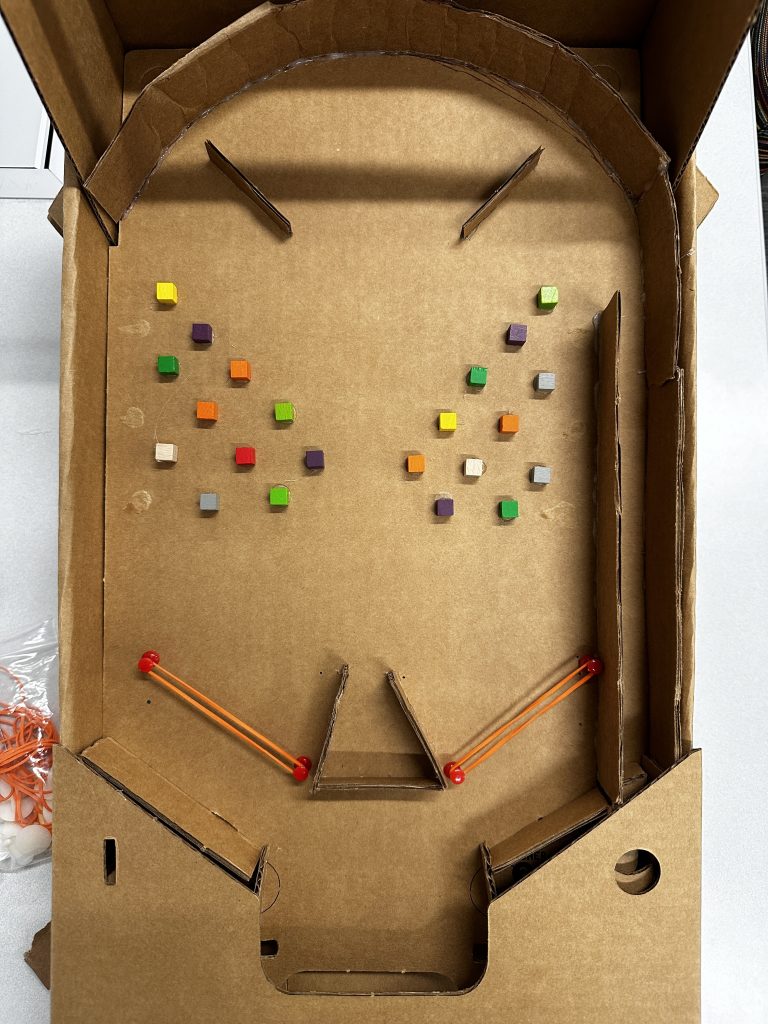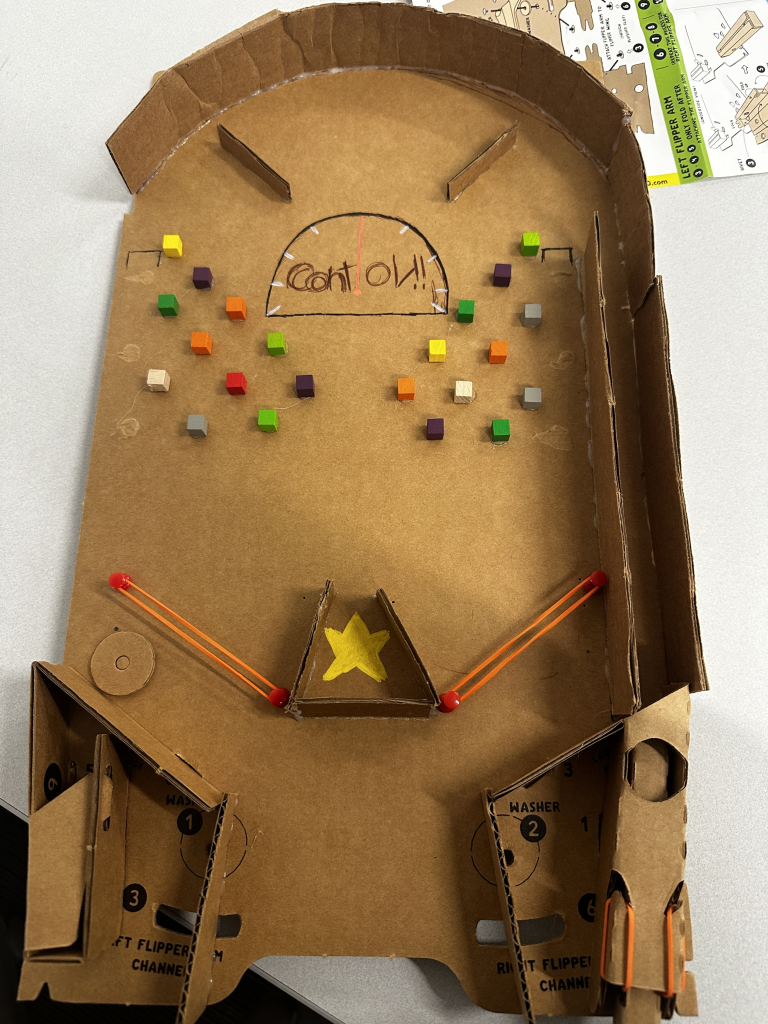Initial Design Ideas

Coming up with an initial design for my Pinbox Bagatelle game was a challenge. I spent a lot of time looking at various bagatelle designs for inspiration, but I didn’t have a specific reference in mind. However, one element remained consistent throughout my iterations: I wanted a single win hole rather than multiple point-scoring holes.
The first draft of my design featured a symmetrical pin layout with three circular bumpers disrupting the ball’s path. Additionally, two flaps at the top were designed to redirect the ball toward the center. One of the most distinct features in this version was the use of rubber band bumpers at the bottom. At this stage, my idea was to have a game that continued until the player won. The rubber band bumpers made it almost impossible for the ball to exit the playfield, allowing players to keep bouncing it back up. However, as I refined my concept, I realized that this mechanic strayed from the traditional spirit of bagatelle.
Rough Physical Design

Once I built a rough prototype, I really started to explore the concept of control in gameplay. However, at this point, I still hadn’t figured out a concrete theme for my game. The rough physical design maintained the symmetrical pin layout from the initial sketch and included a curved top inspired by traditional bagatelle boards. The disruption flaps at the top also remained.
One significant change I made in this iteration was modifying the rubber band bumpers. Instead of using them to keep the ball in play indefinitely, I turned them into additional ball catchers alongside the win hole, introducing a losing condition. This opened up the bottom of the playfield, allowing the ball to exit. Another major alteration was the removal of the round bumpers. I initially made this change due to a lack of suitable materials, but it turned out to be a happy accident, one that would later help define my game’s theme.
Playtesting and Iteration
While I didn’t get the chance to have others playtest my game, I conducted extensive solo testing. As soon as I finished the rough prototype, I started experimenting with how the ball moved. One of the first issues I encountered was that the ball struggled to reach the top of the playfield, which led me to add a shooter lane.
However, after adding the shooter lane, I encountered another unexpected problem: the transition between the right wall and the curved top wasn’t smooth. The ball would hit a wedge and lose momentum rather than gliding smoothly across.
To address this, I extended the curved top further down along the right wall, creating a seamless surface that allowed the ball to flow as intended.

Another major discovery during playtesting was that my pins were too closely spaced, which caused the ball to get stuck in unwanted places. To fix this, I removed some of the pins, which led to a surprising realization. I had unintentionally created three distinct lanes:
- A left lane for when too much force was used
- A right lane for when too little force was applied
- And a middle lane for when the player used just the right amount of strength
Then, during one particular playtest, I pulled the launcher back with just the right amount of force, and the ball landed perfectly in the win hole. That’s when it hit me, my game was all about control. The core challenge wasn’t just getting the ball into the win hole but mastering precision and finesse to find the perfect balance of force.
Final Design
This is the final design for my game, Control, a game all about self-control. To effectively communicate this theme, I implemented a speedometer-style visual design. A fully filled bar to the left represents pulling back too hard, while a barely filled bar to the right represents pulling too weakly. In the center, players see the game’s logo, featuring a speedometer pointing straight to the middle and the winning hole positioned below it, reinforcing the idea that the goal is to shoot with just the right amount of force.

Unfortunately, in the final physical version, I didn’t get the chance to fully realize my intended design. The playfield is missing the two power bars on each side, which would have further reinforced the theme. However, if I were to revisit this project, adding those elements would be an easy improvement to make my game feel more complete, along with finishing its logo.
I’m excited to move on to designing a pinball machine, incorporating the lessons I learned from making this bagatelle. While the plain brown cardboard look worked well for a bagatelle (since traditional bagatelles often had simple wooden designs) my pinball machine will need a much more eye-catching aesthetic to stand out among real machines.
